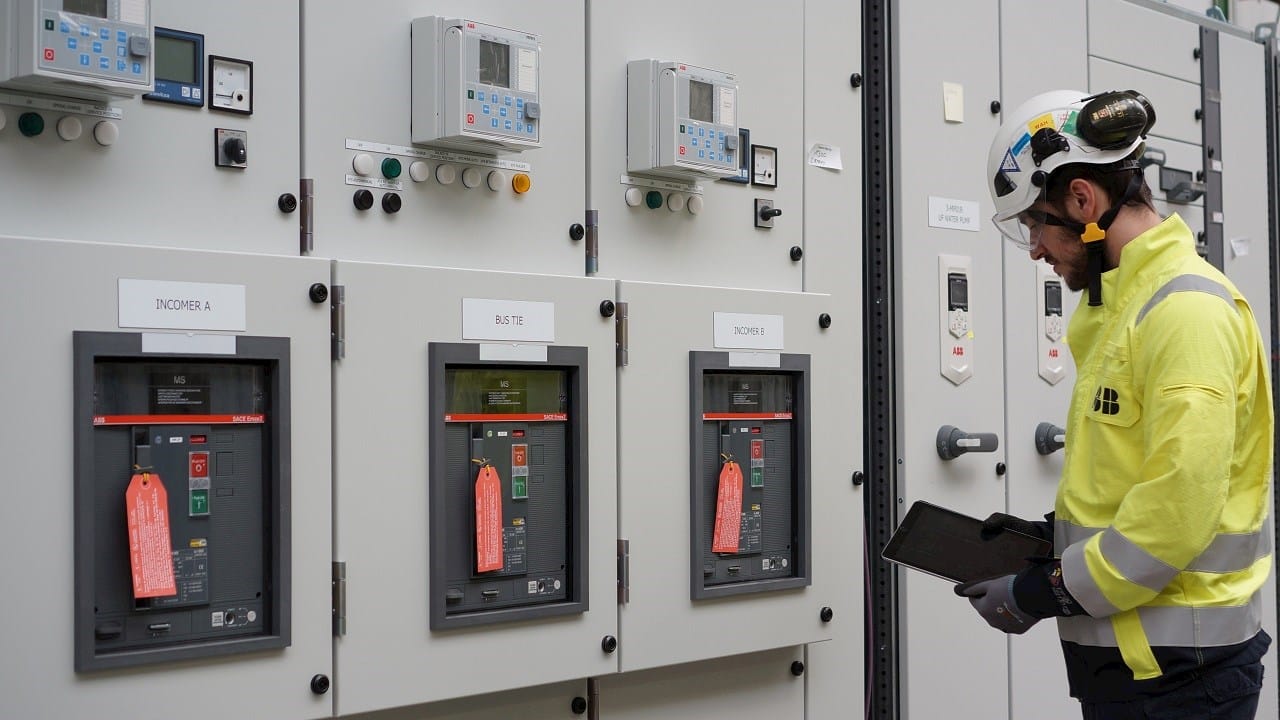
Switchgear is primarily responsible for interrupting circuits in the event of a short or an overload — while simultaneously maintaining power flow to unaffected systems. It also isolates circuits from power supplies and permits multiple sources to feed a load.
You actually have a form of switchgear in your home right now. The box of circuit breakers that trip whenever there’s a power surge or a circuit overload is basic switchgear. It’s just scaled down for domestic use. With that in mind, let’s take a look at how switchgear is used in electrical systems.
Switchgear Types
Switchgear is classified into two primary types: metal-enclosed and metal-clad.
Metal-enclosed is usually found indoors and is typically applied to low- and medium- voltage situations. Low voltage is considered anything up to 1kV, while medium voltage scales from 1kV to 36kV. Anything above 36kV is considered high voltage. Compartmentalization and shutters are not required for metal enclosed switchgear; having both front and rear accesses is also optional.
Metal-clad switchgear is employed outdoors and protects various types of relays, circuit breakers, current and potential transformers, meters, and bus conductors. This switchgear type is usually employed in high-voltage situations. Front and rear accesses are a must. Further, all live parts must be in separate compartments and shutters are fundamental to its operation.
Switchgear Functions
Circuit breakers most often come to mind when discussing switchgear. However, that’s just one aspect of the functioning of this critical electrical system component. Industrial switchgear must also be capable of metering as well as carrying and routing power to different subsystems and machines.
To accomplish all of these tasks, the most sophisticated switchgear, like that offered by Schneider Electric also contains current transformers, voltage transformers, protection relays and measuring instruments. Electrical switches, fuses, lightning arrestors, industrial surge protectors and electrical isolators are found in switchgear as well.
Circuit Breakers
With all of that said, circuit breakers remain a critical component of switchgear. The five basic types are oil, air, gas, hybrid, and vacuum. As you might have guessed, the medium it employs determines the way the breaker functions.
For example, an oil circuit breaker blasts a jet of vaporized oil along the path of an arc to break it. Meanwhile, an air-insulated circuit breaker emits a puff of compressed air to interrupt an arc.
Switchgear Applications
There are many ways switchgear is implemented in electrical systems. These some of the most common switchgear applications:
- Industrial power distribution: Surge and overload protection are paramount in manufacturing facilities. Switchgear also serves to facilitate more efficient distribution of power to industrial equipment in these settings.
- Solar power generation: Voltage and surge regulation are mandatory in solar power installations. Regulation of the passage of electric current from the main unit to the subunit is the primary function of switchgear in these applications.
- Residential power distribution: Controlling load and voltage, as well as facilitating fault regulation is switchgear’s primary responsibility in residential environments.
- Power stations: Switchgear is mainly tasked with protecting the various types of electrical connections found in power stations. Power generation and distribution requires a variety of circuit breakers and surge protectors. These are found in power station switchgear.
Given how switchgear is used in electrical systems, specific assemblies are designed to accommodate specific voltages. After all, fault levels between generating stations and load centers will vary based upon the voltage involved. With this in mind, system designers can tailor switchgear assemblies to suit the capacity of the system they need to protect. Having this flexibility improves efficiency as well as cost effectiveness.
This is an article provided by our partners network. It does not reflect the views or opinions of our editorial team and management.
Contributed content
Tradersdna is a leading digital and social media platform for traders and investors. Tradersdna offers premiere resources for trading and investing education, digital resources for personal finance, market analysis and free trading guides. More about TradersDNA Features: What Does It Take to Become an Aggressive Trader? | Everything You Need to Know About White Label Trading Software | Advantages of Automated Forex Trading









































